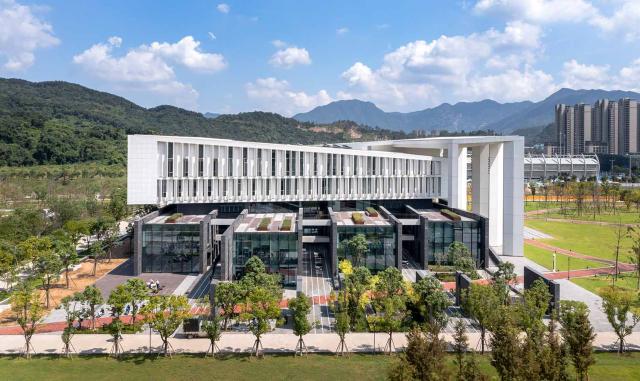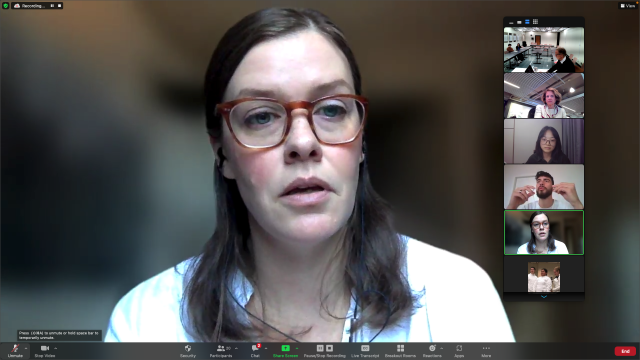Students in Three Countries Attend Class Simultaneously at Kean

Ge Hekai Hall houses architecture and other programs at Wenzhou-Kean University in Wenzhou, China.
Students and faculty at Kean’s Michael Graves College School of Public Architecture began remote learning as a necessity during the pandemic, but are now using it as a tool in a classroom that stretches across the world.
Architecture students at Kean’s main campus in Union, at Wenzhou-Kean University (WKU) in China, and on a study abroad program in Rome are taking class together via remote instruction.
“It’s so exciting to get beyond the pandemic and ask, where do we go with virtual learning?” said David Mohney, FAIA, dean of Michael Graves College at Kean USA and WKU. He is currently teaching Professional Practice 2, an upper-level architecture course, for graduate students in Rome, Wenzhou and at Kean USA.
The professional practice class includes guest speakers from New York City and elsewhere, who are able to lecture students in all three countries.

“That’s the new model, the fact we can have these speakers participate remotely. Previously, they would never have come to campus,” Mohney said. “We’re going to get to the point where we figure out the best way to teach. Different classes can be taught in different ways.”
The professional practice course became a global learning opportunity for students serendipitously.
It began as both an in-person course for WKU students, with Mohney teaching remotely from Kean USA, and an in-person section at Kean in Union, also offered remotely in Rome. However, a student in Union asked to join the Wenzhou section remotely when she could not fit the in-person class into her schedule. Then the three groups were combined.
Now all class members – 10 students at Kean USA, five in China and five in Rome – take the class together, starting at 9 a.m. in Union, 9 p.m. in China, and 3 p.m. in Rome.
“We have the benefit of students in New Jersey, Rome and China being in the virtual classroom together and learning from each other, instead of just a group sitting together at a table,” Mohney added.
Co-teaching the class are Margaret Newman, FAIA, in New York, and WKU Vice Chancellor Dr. Zheng Xiaodong, Ph.D., in Wenzhou.
Kean's Office of the Provost and Senior Vice President for Academic Affairs, which oversees academic standards at the University, is currently exploring other innovative ways to enhance student learning experiences in the near future.
Virtual learning is natural for architecture students, Mohney said, partly because they are accustomed to working and presenting online, using software tools such as AutoCAD for design and schematics.
Many Michael Graves College architecture students who are currently in Rome missed out on the program’s study in Rome semester as undergraduates due to the pandemic but are now making up for those postponed plans.
Jonathan Medeiros, a graduate student from Howell who will receive his master’s degree in architecture in the spring, is among the Rome group.
Medeiros said studying there, along with a group of students learning remotely in Wenzhou, has presented opportunities he did not imagine.
“Witnessing the culture differences between Rome, USA, and Wenzhou is always eye opening, especially when you look at the level of work being produced,” he said. “You would think, architecture is architecture, they’re just buildings. Witnessing a critique or presentation of these three programs can change that opinion so quickly. Watching the work produced makes you want to travel and study all kinds of structures from all around the world.”
He said the students have learned from guest speakers from across the U.S., China and Europe, who offer understanding of different cultures and ways of approaching buildings and designs.
“The beauty of this form of art is the combination of different ways something can be done and perceived,” Madeiros said.